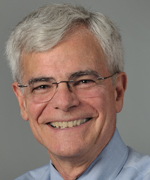From the Deputy Director for Intramural Research
Celebrating the Global Community of Scientists at the NIH

The United States has benefited from a huge influx of highly educated and talented biomedical researchers from other countries. Their desire for an outstanding research experience is matched by our open and inclusive attitude towards our international colleagues in providing opportunities (including salary and research support) to pursue important research. The NIH intramural research program is perceived as being one of the top research facilities in the world. For many foreign researchers, a successful postdoctoral experience at the NIH is often a ticket to future success in a scientific career either back home or in the United States.Look to your right and your left in the labs or clinics at the NIH and you are likely to spot a scientist who was born outside the United States and got their primary training elsewhere. At NIH, about 40 percent of our approximately 7,000 scientists and trainees are foreign nationals from more than 100 countries and with various work visas (mostly J-1 and H-1B). And many of our principal investigators were also born outside of the U.S. Why does NIH have this enormous wealth of talented individuals from nearly every part of the world?
We all benefit from what an international cadre of scientists have to offer—a kaleidoscope of cultures, religions, abilities and disabilities, worldviews, and perceptions that can be harnessed to solve almost every problem that nature has thrown our way. At NIH, our international community brings many different points of view to bear on important problems in basic biology, public health, and clinical practice. Think about the teams of NIH’s U.S. and foreign scientists who cracked the genetic code, developed cancer chemotherapy, or responded to the HIV epidemic, and you will appreciate the wonderful tapestry of culture and intellect that makes up our scientific community.
One of the strong indications of the value to the global research effort of a research experience at the NIH is the fact that more and more countries are developing programs to send their postdocs to the NIH for advanced training. We recently signed an updated memorandum of understanding with the Japan Society for the Promotion of Science, which fully supports two years of postdoctoral training at the NIH for Japanese fellows. This program, ably managed by our own Keiko Ozato, a senior investigator in the National Institute of Child Health and Human Development, has been providing research support for Japanese fellows at the NIH for 18 years.
In addition, we have an agreement with Quebec to provide full stipend support for Canadian fellows who, if successful, are then offered independent positions in Quebec when they return to Canada. Newer programs with Russia, Brazil, and Korea provide varying levels of support to allow their fellows to work in NIH laboratories. All of these programs continue the strong NIH tradition of providing advanced training to fellows from all over the world.
We have done less well in tapping the enormous talent and diversity of Americans. Scientists at the NIH who are American citizens don’t reflect the many groups that are traditionally underrepresented in biomedical research including racial and ethnic groups (black or African-American; Hispanic; American Indian and Alaskan Native; and Pacific Islanders) and persons with disabilities.
Efforts are under way to understand this deficit and to provide the opportunities needed to fully realize the potential of our own citizens. NIH’s success in creating a global community of scientists indicates that we appreciate the value of including all kinds of backgrounds and points of view in our scientific community. So we are confident that we can ultimately succeed at home as we have done in the wider world.
NIHers have a long history of celebrating our international colleagues by learning more about their cultures (including food, of course!) and by forming lifelong friendships and collaborations. The strength of this institution reflects the importance of the global community of scientists at the NIH.
This page was last updated on Thursday, April 28, 2022
